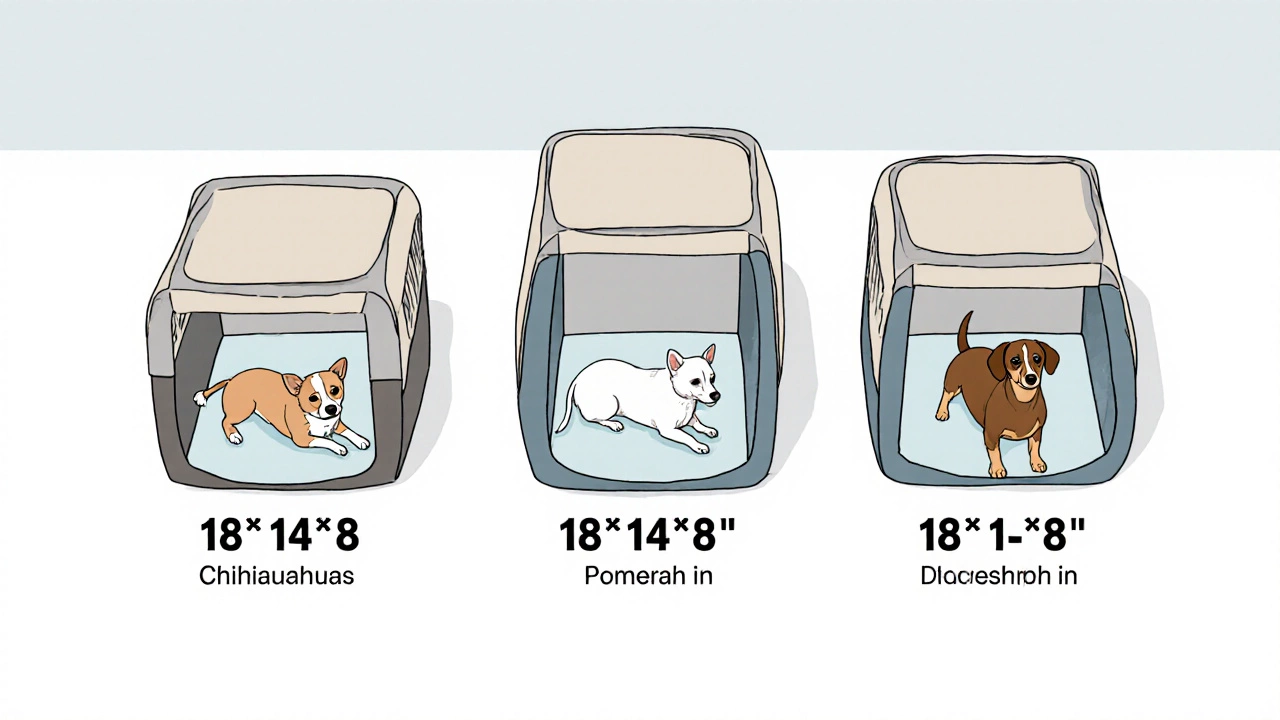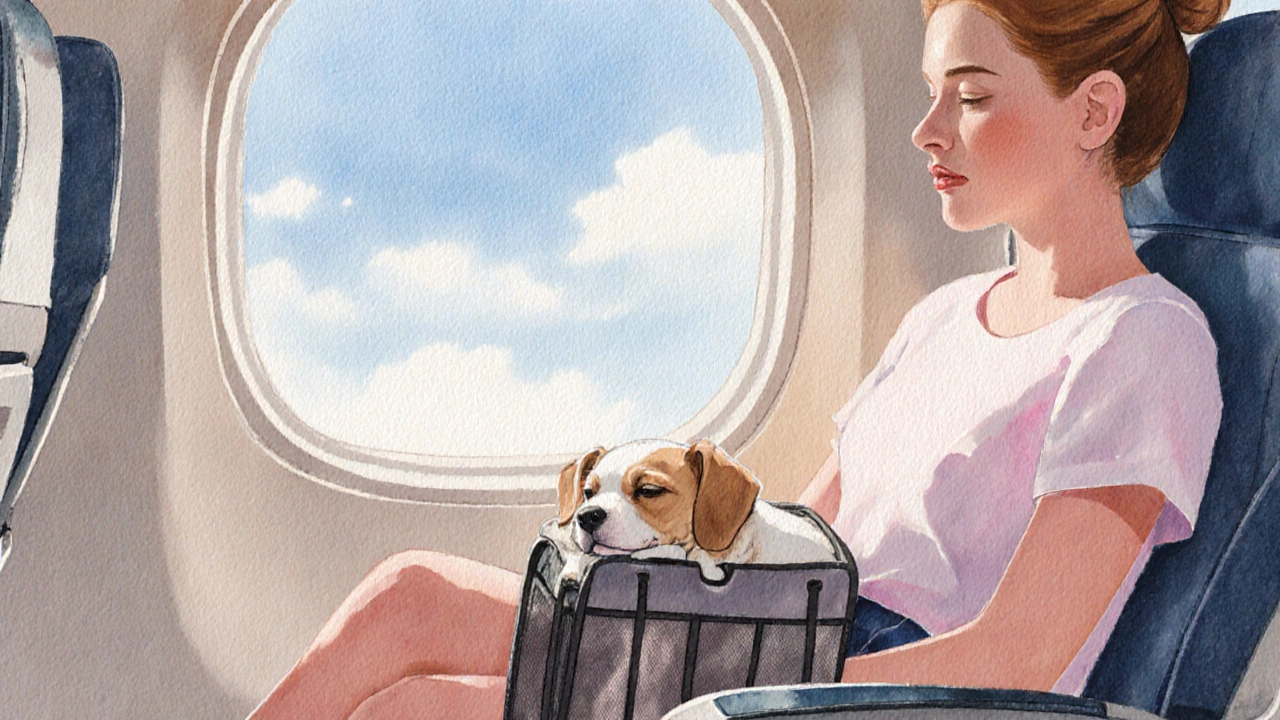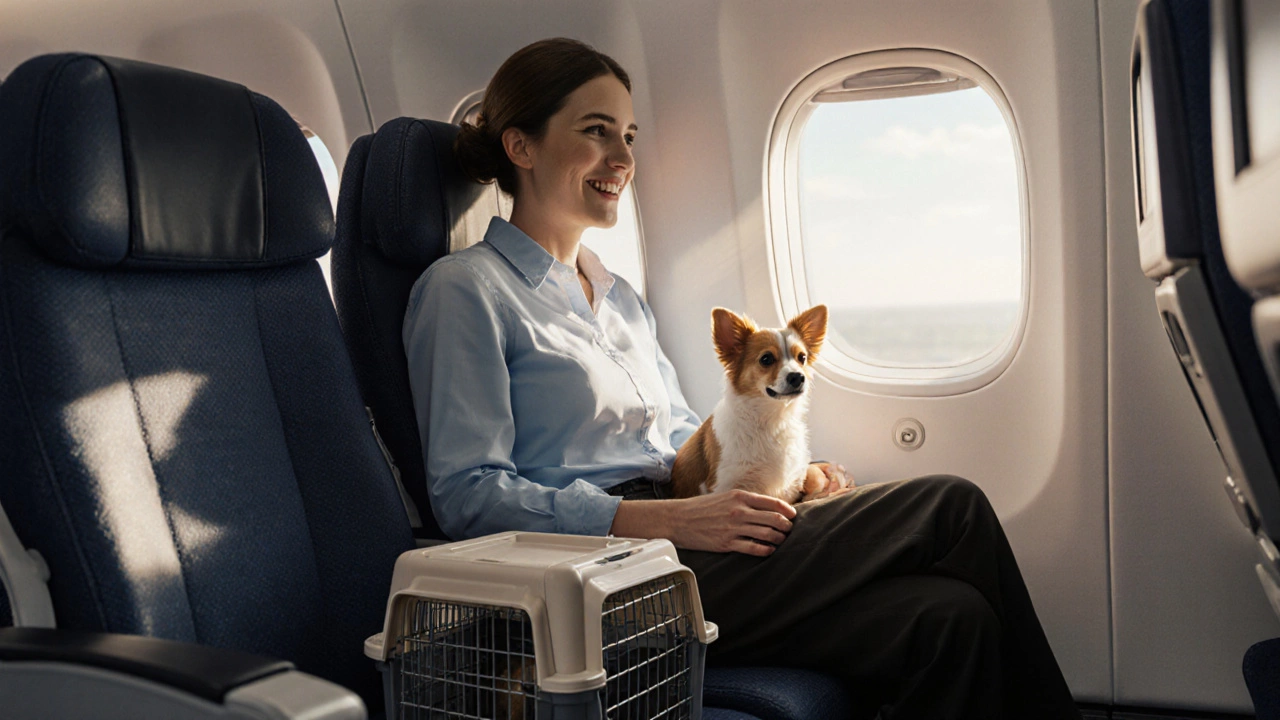Lap Dog Eligibility Calculator
Check Lap Dog Eligibility
Determine if your dog meets airline requirements for lap travel based on size and weight limits.
Result
Enter your dog's information above to see eligibility status
When you ask, Lap Dog is a dog that travels in the passenger cabin and is allowed to sit on the owner’s lap during a flight, the answer hinges on airline rules, dog size, and paperwork. This guide walks you through exactly what you need to know so you can decide whether your furry friend can comfortably share your seat.
Understanding Airline Pet Policies
Every airline publishes an Airline policy that outlines how pets can travel in the cabin, including weight limits, carrier requirements, and fees. In most cases, a pet must be in an approved Pet Carrier that fits under the seat. The carrier itself is the only item that can occupy the lap space.
That means if you want a true lap dog experience-your dog actually sitting on your lap-you’ll need an airline that explicitly permits it, and you’ll need to meet strict size and documentation criteria.
Size and Breed Limits
Most carriers are limited to 18 x 14 x 8 inches (45 x 35 x 20 cm). A dog that fits comfortably inside that space and still has room to move is usually under 10 pounds (4.5 kg). Breeds that often qualify include:
- Chihuahua
- Pomeranian
- Yorkshire Terrier
- Maltese
- Miniature Dachshund
Heavier or longer‑bodied breeds (like Labradors or Golden Retrievers) simply can’t sit on a lap without violating the carrier dimensions, so they must travel in the cabin in a carrier or in the cargo hold.
How to Book a Lap Dog
- Check the airline’s Cabin pet policy for “lap dog” allowances. Not all carriers list this explicitly, so a quick call to reservations often clears things up.
- Reserve a spot early. Airlines limit the number of pets per flight, and lap dog spots fill up faster than standard carrier spots.
- Provide required documentation: health certificate (usually within 10 days of travel), proof of vaccinations, and if applicable, a Pet Passport (EU) or IATA Live Animals Regulations compliance.
- Pay any extra fees. Lap dog fees range from $30 to $125 USD, depending on the carrier.
- Confirm the seat assignment. Many airlines require a window seat for the pet, so the flight attendant can monitor the dog without blocking aisle traffic.

Safety and Comfort Tips on Board
Even if the airline allows a lap dog, the flight can be stressful. Follow these tips to keep both of you calm:
- Pre‑flight exercise: A tired dog is more likely to settle quietly.
- Familiarize with the carrier: Let your dog explore and nap in it at home.
- Bring a small blanket: It adds a sense of security and keeps the carrier clean.
- Hydration: Offer water right before boarding, but avoid giving too much right before take‑off.
- Calm voice and petting: Reassure your dog with gentle talk and a light pat if allowed.
If the crew asks you to place the carrier under the seat, comply promptly - you’ll still be able to keep your dog close, just not directly on your lap.
Pros and Cons of Lap Seating
Knowing the trade‑offs helps you decide if a lap dog is worth the hassle.
| Aspect | Pros | Cons |
|---|---|---|
| Bonding | Constant physical contact reduces anxiety for both. | Limited space may cause the dog to feel cramped. |
| Visibility | Easy to keep an eye on your pet. | May distract you during take‑off/landing. |
| Regulations | Often no additional paperwork beyond standard cabin pet. | Only a handful of airlines permit true lap dogs. |
| Cost | If allowed, fee is usually lower than a separate carrier. | Higher fees for airlines that make an exception. |
Alternatives: Cabin Carrier or Cargo
If your airline doesn’t allow lap dogs, you still have two practical routes:
- In‑cabin carrier: The carrier sits under the seat, and you can still pet your dog through the mesh.
- Cargo hold: For larger dogs, book a temperature‑controlled cargo space. Choose a reputable airline with good animal‑handling reviews.
Both options require the same health documentation, but the cargo route adds a few extra steps, such as a pre‑flight check‑in at the cargo desk.

Pre‑Flight Checklist
- Verify the airline’s lap dog policy and seat availability.
- Obtain a recent health certificate (within 10 days).
- Confirm carrier dimensions meet the airline’s specifications.
- Book a seat with a window and request a lap dog spot.
- Pack a travel blanket, a water bottle (squeeze bottle works well), and a few calming treats.
- Visit the vet for a quick check‑up and discuss any anxiety medication if needed.
- Arrive at the airport early (minimum 2 hours before departure) to complete paperwork.
Frequently Asked Questions
Can I bring a senior dog as a lap dog?
Yes, as long as the dog fits comfortably in an approved carrier and is healthy enough for travel. Senior dogs may need extra breaks and a calming blanket.
Do airlines charge extra for a lap dog?
Most carriers add a fee ranging from $30 to $125 USD. Some airlines waive the fee if the dog is a registered service animal.
What if my dog becomes noisy or restless?
Flight attendants can ask you to place the carrier under the seat. Having a chew toy or a small blanket can help keep the dog calm.
Are emotional support animals treated the same as lap dogs?
Since 2021, many U.S. airlines no longer recognize ESAs as service animals. They are subject to the same cabin pet rules, which usually means they must stay in a carrier.
Which airlines currently allow true lap dogs?
A few carriers, such as Alaska Airlines (U.S.), Air Canada (Canada), and WestJet (Canada), still list “lap dog” as a permissible option for dogs under 5 kg that fit in a carrier.
Final Thoughts
Whether your dog can sit on your lap during a flight boils down to three factors: airline policy, dog size, and proper documentation. By doing the homework early, choosing an airline that supports lap dogs, and preparing your pet for the journey, you can turn a daunting trip into a pleasant adventure for both of you.
